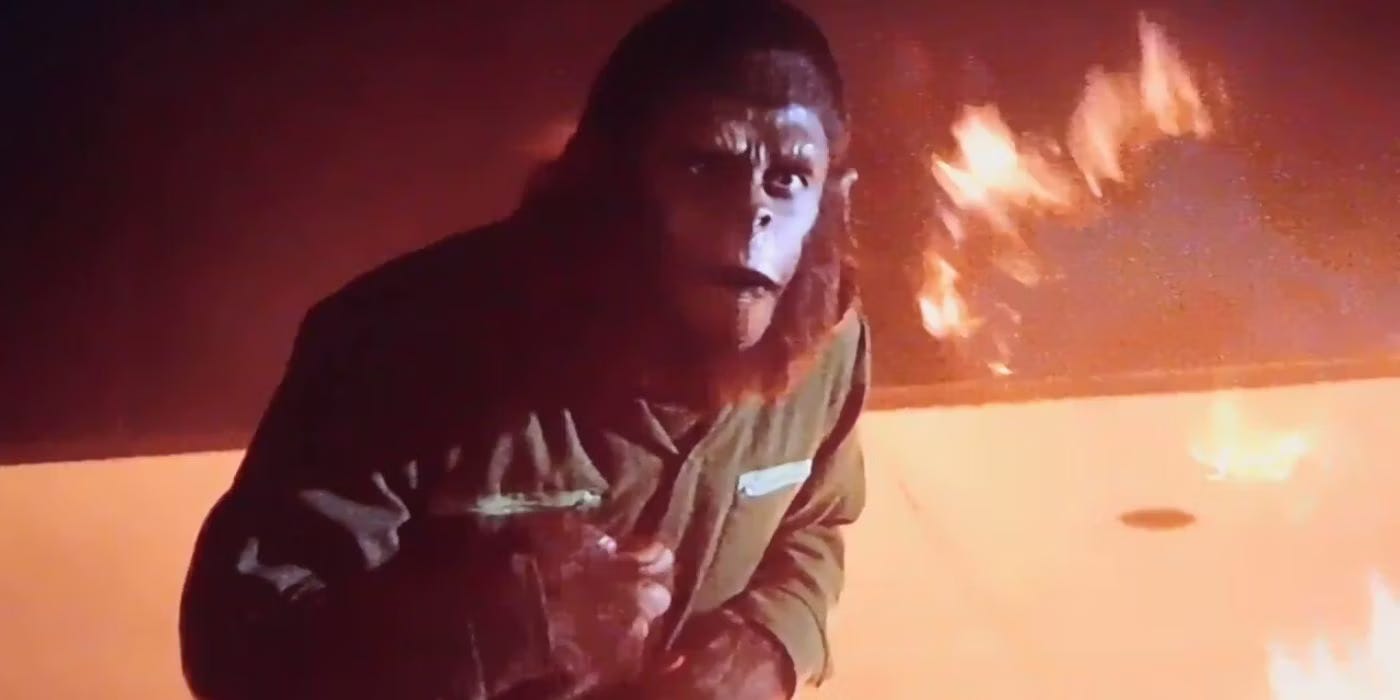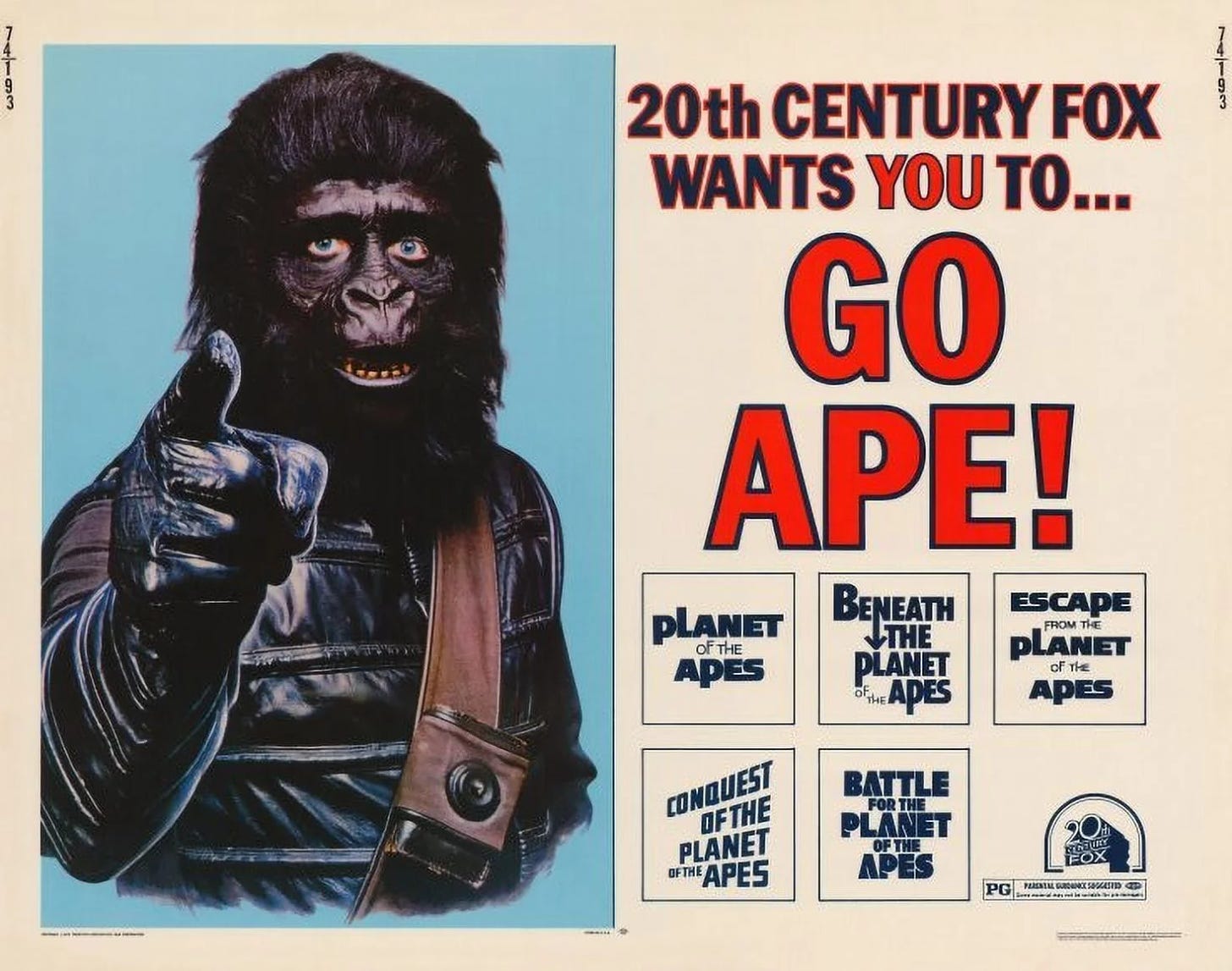Power to the Primates
In 1972, ‘Conquest of the Planet of the Apes’ brought the films’ world down to Earth.
It’s the summer of 1974, you’ve got time on your hands, and you want to see a movie. In fact, you’ve got a lot of time on your hands and you’re drawn to an image that pays homage to the famous “I Want YOU For U.S. Army'' poster in which Uncle Sam looks and points directly at the viewer, lest there be any confusion about the “you” in question. Except it’s not Uncle Sam doing the pointing, but an actor in an ape suit informing you that “20th Century Fox Wants YOU To… GO APE!” Beneath those words are the logos of the five Planet of the Apes movies, beginning with 1968’s Planet of the Apes and concluding with the previous year’s Battle for the Planet of the Apes. Maybe this all-day marathon takes place in a theater, maybe a drive-in playing them from dusk to dawn. Whichever the case, you’re in for the long haul.
Let’s also assume you’ve somehow never seen any of these movies before, or even know that much about them. The twist at the end of Planet of the Apes hits hard and you’re still thinking about it as the credits roll against the sound of waves hitting the shore. Leave now and you’ll have seen a grim, thought-provoking movie, a fully satisfying story. It’s kind of perfect, really. Maybe you should leave. But, with five movies to show, the theater doesn’t waste any time starting the next one, Beneath the Planet of the Apes. It’s not as good, in many ways playing like a retread of the first film, but it’s not bad, either.
It also gets weirder and darker as it goes along, following our heroes as they uncover a cult of mutant humans worshiping an atomic bomb. Trapped in a volley of ape vs. human violence in the cult’s underground lair, Taylor, the protagonist of the first film played by Charlton Heston, uses his dying moments to detonate it, destroying the Earth (a “green and insignificant planet,” a narrator informs us). Taylor began the first film as an embittered misanthrope. In some respects, this seems like a natural end for him (and, of course, for us). And, once again, the series has seemingly arrived at a narrative dead end. Except, that is, backwards. Escape from the Planet of the Apes sends three of the future’s intelligent apes—a chimpanzee couple named Cornelius (Roddy McDowell) and Zira (Kim Hunter) and their companion Dr. Milo (Sal Mineo)—to 1970s America, where they first become celebrities then outcasts when humanity learns of the ape-dominated future from which they hail. It’s the lightest of all three films by a good measure, until it isn’t. Cornelius, Zira, and Dr. Milo all meet bad ends and it’s only a last-moment switch that saves Cornelius and Zira’s infant child from the same fate when he’s whisked away by a kindly circus owner named Armando (Ricardo Montalbán). Yet while Escape is set in the present (more or less as the 1971 film takes place in 1973), it’s the next entry that feels timely, even though it takes place decades later in the not-so-far-off year of 1991.
Keep reading with a 7-day free trial
Subscribe to The Reveal to keep reading this post and get 7 days of free access to the full post archives.





